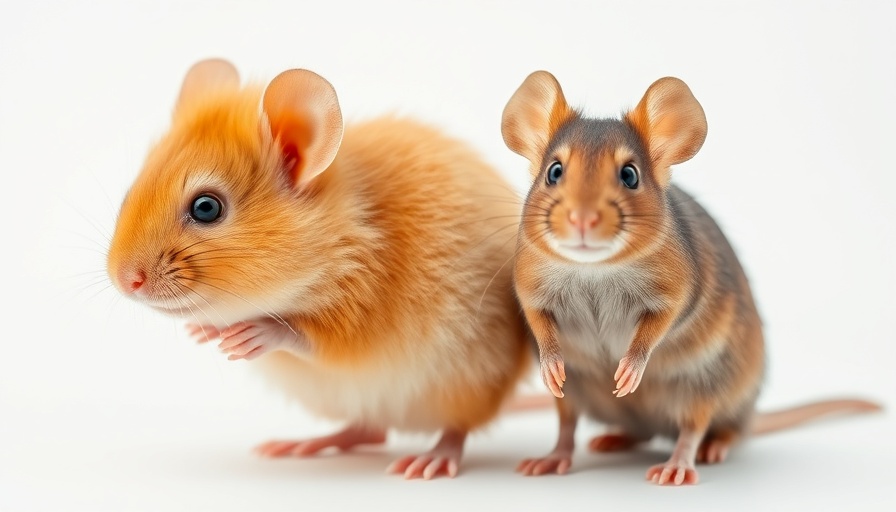
Woolly Mice: A Step Toward De-Extincting Mammoths?
In a fascinating turn of events within the field of biotechnology, Colossal Biosciences has genetically engineered a mouse that bears striking similarities to the woolly mammoth, aiming to validate future attempts at de-extinction. This new breed, dubbed the Colossal Woolly Mouse, is a creative solution that showcases the power of gene editing—an innovative step toward potentially resurrecting the long-extinct mammoth by modifying the genomes of Asian elephants.
The Gene-Editing Journey
The journey begins with genome alterations, where the researchers effectively modified multiple genes in the lab mice to promote longer, frizzier, and golden fur, characteristics that mirror mammoth traits. Unlike previous methods that might have hastily inserted mammoth DNA into a mouse, Colossal’s approach aimed at understanding and refining the genetic basis of these specific traits. Beth Shapiro, the chief science officer at Colossal, explained this careful methodology, which respects the vast evolutionary differences of the two species.
Scientific Validation and Future Aspirations
This mouse model is not just a cute gimmick; it is a major scientific achievement that validates Colossal's methods and goals for mammoth de-extinction. The team is exploring around 85 specific genes related to the cold adaptation that will be crucial when moving on to edit elephant genetics. The ultimate target is an elephant that not only physically resembles a mammoth but also exhibits behavioral patterns consistent with the ancient species.
The Critical Views
However, not everyone is convinced of the viability or ethics behind these experiments. Experts like Vincent Lynch from the University at Buffalo have raised important questions: while the woolly mice present an attractive visual, do they genuinely replicate the physiological adaptations necessary for survival in cold climates? Furthermore, there are concerns regarding human resources—whether such efforts may detract from current conservation measures aimed at preventing extinctions today.
Dr. Louise Johnson adds a layer of skepticism, questioning if chasing the dream of resurrecting a mammoth is perhaps a form of 'false hope' in a world where extinctions are increasingly prevalent. The challenge, she observes, lies not only in achieving physical resemblance but also in ensuring these creatures can thrive in modern ecosystems.
Ethical Dilemmas in De-Extinction
Ethics play a crucial role in this discussion. As scientists strive to push biological boundaries to recreate long-lost species, one must consider the implications of such technologies. Is it our right to play God with nature, and should the financial investments be redirecting towards preserving existing species rather than reviving those long gone? These are vital questions that leaders across industries must grapple with as scientific capabilities advance.
Conclusion: The Path Forward
The creation of the Colossal Woolly Mouse is undoubtedly a significant milestone in genetic engineering and de-extinction efforts. It reflects both a deepening understanding of genetics and the complexities involved in merging scientific innovation with ecological ethics. While the questions remain whether this journey will lead to the eventual revival of woolly mammoths, the implications of Colossal's work extend well beyond the laboratory.
As corporate leaders and decision-makers, it is essential to keep an eye on these developments, as they hold the potential for revolutionary change across multiple sectors, from conservation strategies to biotechnology business models. The balance of innovation and ethical responsibility will determine how beneficial these efforts can be for both humanity and the planet.
 Add Row
Add Row  Add
Add 




Write A Comment